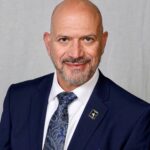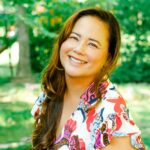by Glennine Varga, AAS, RDA, CTA
What does the sleep culture feel like in your practice? Do patients immediately know how your office feels about sleep breathing and how you can help? The American Dental Association (ADA) has started to make progressive steps in the direction of airway supportive therapies and now is the time for our offices to step up and take part.
Check out our last team column ADA, Airway and the Team we glanced over the different points of the statement and how we team can integrate these concepts. Now, let’s map out and identify ideas for implementation, and create action plans to help enhance your sleep culture within your practice.
The Path to Diagnosis
When a patient presents for airway screening in your practice and it shows they are at risk for sleep disordered breathing what do you do? Can you or should you test the patient’s sleep breathing? What exactly do we need from a medical doctor? What do we bill to medical insurance? These questions have been presented many times over the years to dental state boards and different organizations.
Here are some implementation ideas for the non-diagnosed adult patients and an example action plan.
Action Item: Change your existing medical history to include these questions “Have you ever had a sleep test?” or “Have you ever been prescribed Positive Airway Pressure (PAP) therapy? The answer will dictate which protocol to follow. If the patient says NO, ask more questions regarding subjective symptoms. The STOP BANG questionnaire is an excellent choice and can be added to your existing medical history. If the patient says YES, ask about therapy compliance and praise when compliant. When not compliant, it is appropriate to evaluate for oral appliance therapy. Reminder! True compliance is wearing it all night every night.
Follow the Money
“How much does it cost?” and “Will insurance cover it?” These questions seem to be the most commonly asked questions when it comes to patient conversations.
It’s simple and easy just to make your patient financially responsible for services, but they may request medical benefits. Since every insurance company has its own policy and rules, it can be difficult to get benefit for every patient. Help the patient understand there will be a fee to obtain a diagnosis from the physician, which will be billed by the physician, and costs at your office for your professional time and judgement, the oral appliance and ongoing management. Benefits, both dental and medical, change frequently. Most successful offices offering SRBD services have found a way to offer screening for free or a low fee.
Action Item: Determine if your practice will be helping patients gain insurance benefit or not. Get a copy of a patient’s medical insurance card and baseline sleep study. Prior to the meeting, verify benefits by contacting the insurance company and researching the medical policy by phone or online. Print and save them for future use. Keep in mind insurance policies can change at any time. Here is Medicare’s Durable Medical Equipment (DME) policy, Local Coverage Determination (LCD): https://www.cgsmedicare.com/jc/coverage/lcdinfo.html. You must be enrolled as a DME supplier to file a claim with your Medicare DME jurisdiction.
Medicare and Medical Billing
In January of 2011, Medicare approved oral appliances; most private insurance followed Medicare’s lead and now offer benefits. In my experience, many commercial insurance companies follow parts or all of Medicare’s policy. So whether you want to bill Medicare or not, you do need to know about it. Even if you don’t want to file a claim, a private financial contract is needed. Also, other medical providers may ask if your office is able to file a claim with Medicare. If the answer is no, the physicians are ready to find another dentist to ask. Many physicians see a high percentage of Medicare patients.
Medicare’s LCD states a sleep study must be ordered as a result of a face-to-face physician evaluation. It also states a DME supplier cannot use a Home Sleep Apnea Test (HSAT). Appliances must be Pricing, Data, Analysis and Coding (PDAC) approved. The lab you choose will understand PDAC and advise you which devices are listed. Also, pay attention to the manufacturer you must use. This list is updated throughout the year. Only appliances with open end dates are approved.
Action Item: Select someone to oversee Medicare’s LCD and the rules required to be in compliance. Communicate all changes with all team. The policy can impact diagnosis to delivery.
Team Learning and Maximum Impact
Most dentists invest in airway driven therapy education. However, team may not always participate. If possible, ask your doctors to share the content. Best case scenario: your doc presents the information to you and leads team discussions. If this is not possible, there are many resources online. Check out the ADA’s online courses regarding DSM and children’s airway: https://ebusiness.ada.org/education/viewcourse.aspx?id=120.
Most patients live within a 30 mile radius of your practice. Think local when brainstorming your marketing efforts. Get out of the practice and into the community. Be open minded – sleep and breathing can impact any human at any age. The sky is the limit when it comes to who you can approach to ask for referrals from. If you find other professionals to refer to or accept referrals from nurture the relationship and plan fun events for your office and theirs. Bowling, painting with wine and cooking classes are fun ideas to bring teams together.
Action Item: Identify ways as a team to create awareness within your community. Identify what other professionals you can approach with deliverable marketing materials. There is potential within your community, schools, sports, businesses, health clinics, other health care professionals, other functional medicine professionals, holistic providers, law enforcement, insurance companies, DME companies, sleep diagnostic facilities the list goes on and on.
Offering services to patients that will help SRBD can be very rewarding. Keep focused on your patient’s success and share their stories on social media, with their permission, of course. As you move through your own action items and team challenges enhancing your sleep culture, align your ideas with the ADA policy statement and refer to it as needed.
Part of formulating implementation ideas is the ability to adapt to the changes taking place in this evolving specialty. Read Dr. Warren Schlott’s “The Changing World of Dental Sleep Medicine”.





